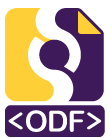 Digital sovereignty, or the ability of nations, organisations and individuals to control their own digital destiny, is a fundamental issue of the 21st century. At the heart of this challenge lies a seemingly trivial question: who controls the format of the documents that contain our intellectual property or personal information?
Digital sovereignty, or the ability of nations, organisations and individuals to control their own digital destiny, is a fundamental issue of the 21st century. At the heart of this challenge lies a seemingly trivial question: who controls the format of the documents that contain our intellectual property or personal information?
In this context, the standard and open Open Document Format (ODF) – the native format of LibreOffice documents, also supported by other suites – is the fundamental technology for those seeking true digital independence.
Digital sovereignty includes the ability to control access to one’s own information without depending on third parties, to make independent technological choices based on one’s own needs, to ensure independent access to strategic data without depending on the commercial interests of Big Tech, and to maintain this technological self-determination in the face of market consolidation.
When government agencies, businesses, or citizens store their documents in proprietary formats controlled by Big Tech, they surrender part of their sovereignty and depend on these external entities to access their own information.
Why document formats are important for sovereignty
Document formats are infrastructure, which—like roads, power grids, or telecommunications networks—are fundamental to the functioning of modern societies. Consider what happens when strategic documents exist only in formats controlled by a single vendor:
- Vendor Lock-In: Organisations find themselves trapped, unable to switch to alternative software without costly conversion processes and potential data loss.
- Loss of Control: formats can and do change without notice and beyond the control of users, increasing the effect of vendor lock-in.
- Fragility of Access: if the vendor controlling the format changes the format or discontinues support, as was the case with Windows 10, access to documents becomes problematic or impossible.
- Economic Dependency: The cost of the licence required to perform software updates creates a relationship of economic dependency in order to access one’s own data, and effectively transfers ownership of the data to the vendor that controls the format.
Why ODF is the only tool for digital sovereignty
ODF is governed by OASIS, an international standardisation organisation that protects its transparent development, and is published as ISO/IEC 26300-2015 (and soon ISO/IEC 26300-2025). Unlike proprietary formats, ODF specifications are public and can be freely implemented, are developed through a transparent, multi-stakeholder process, are not controlled by a single government or company, and are subject to international standardisation bodies.
This means that governments and companies can participate in defining the format specifications, rather than being forced to passively accept changes imposed by a single vendor based on its commercial strategies.
Thus, ODF specifications allow anyone to create an office suite that natively supports the format and promotes digital sovereignty, without any authorisation, licence fees or fear of legal action, while supporting the local software industry.
ODF enables true interoperability, not only between different software packages, but also between countries, languages and political systems. A document created in Brazil can be opened and edited in India, Germany or Japan using locally developed software. This breaks …
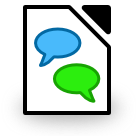

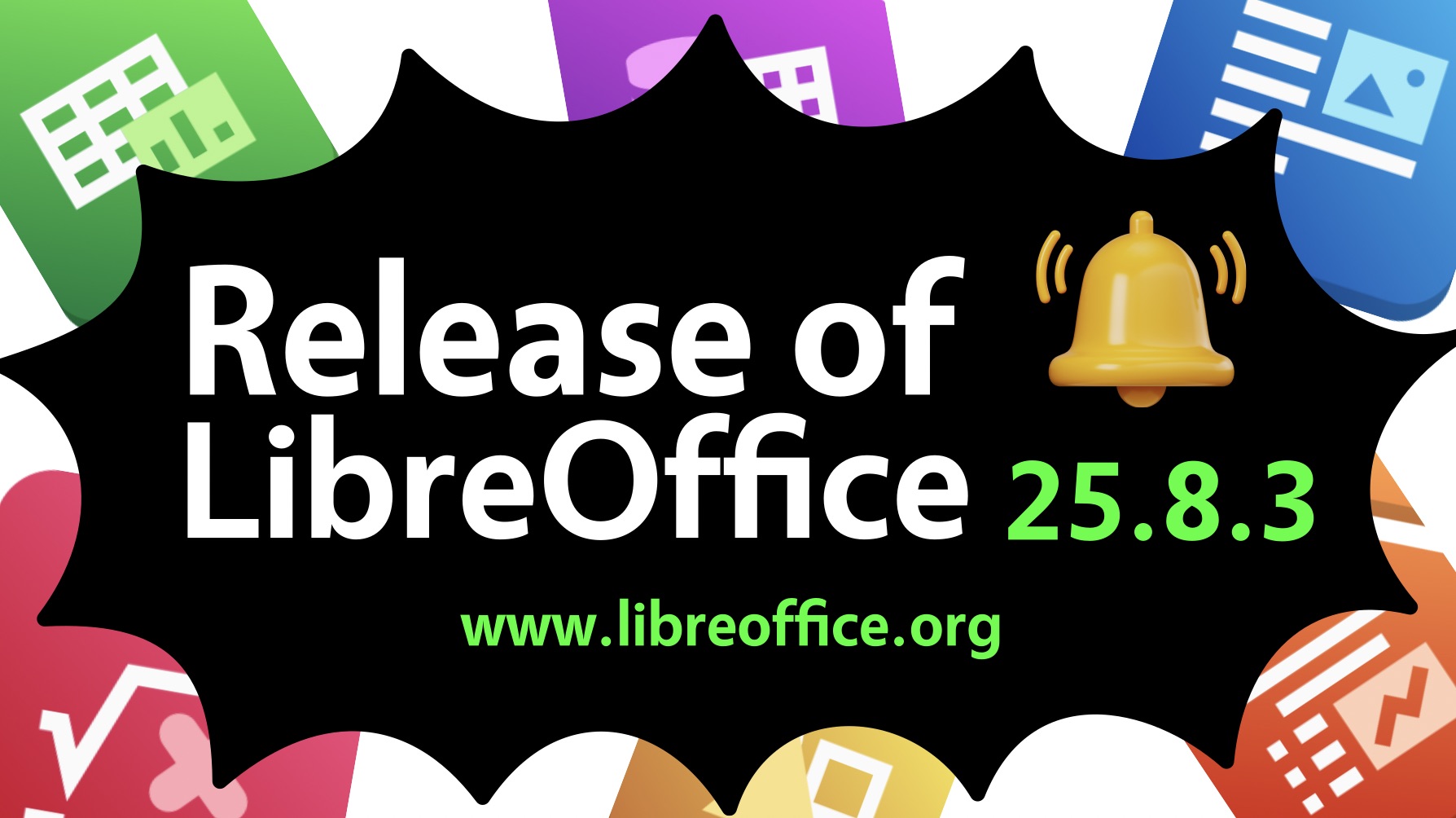
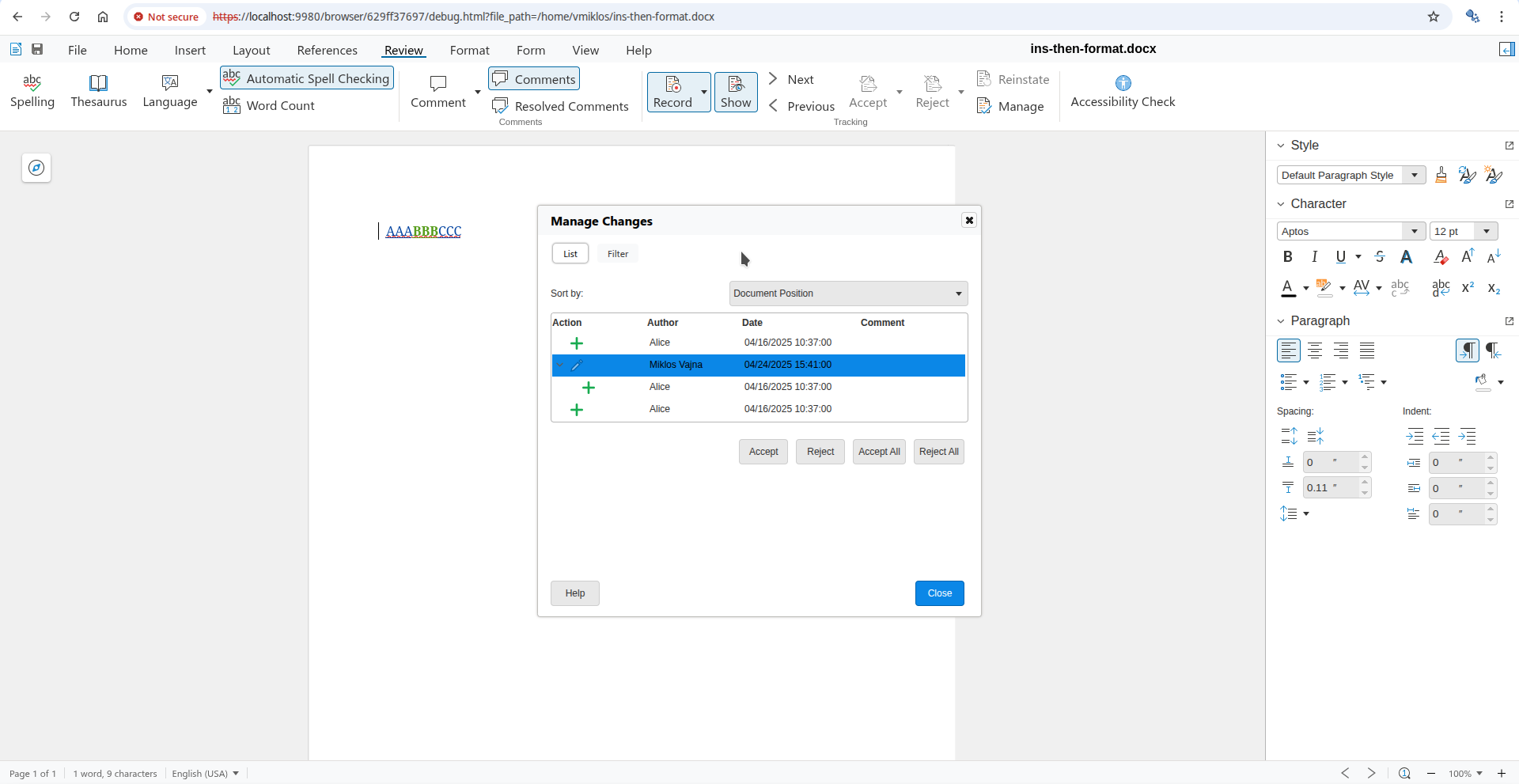 Interdependent tracked change: baseline
Interdependent tracked change: baseline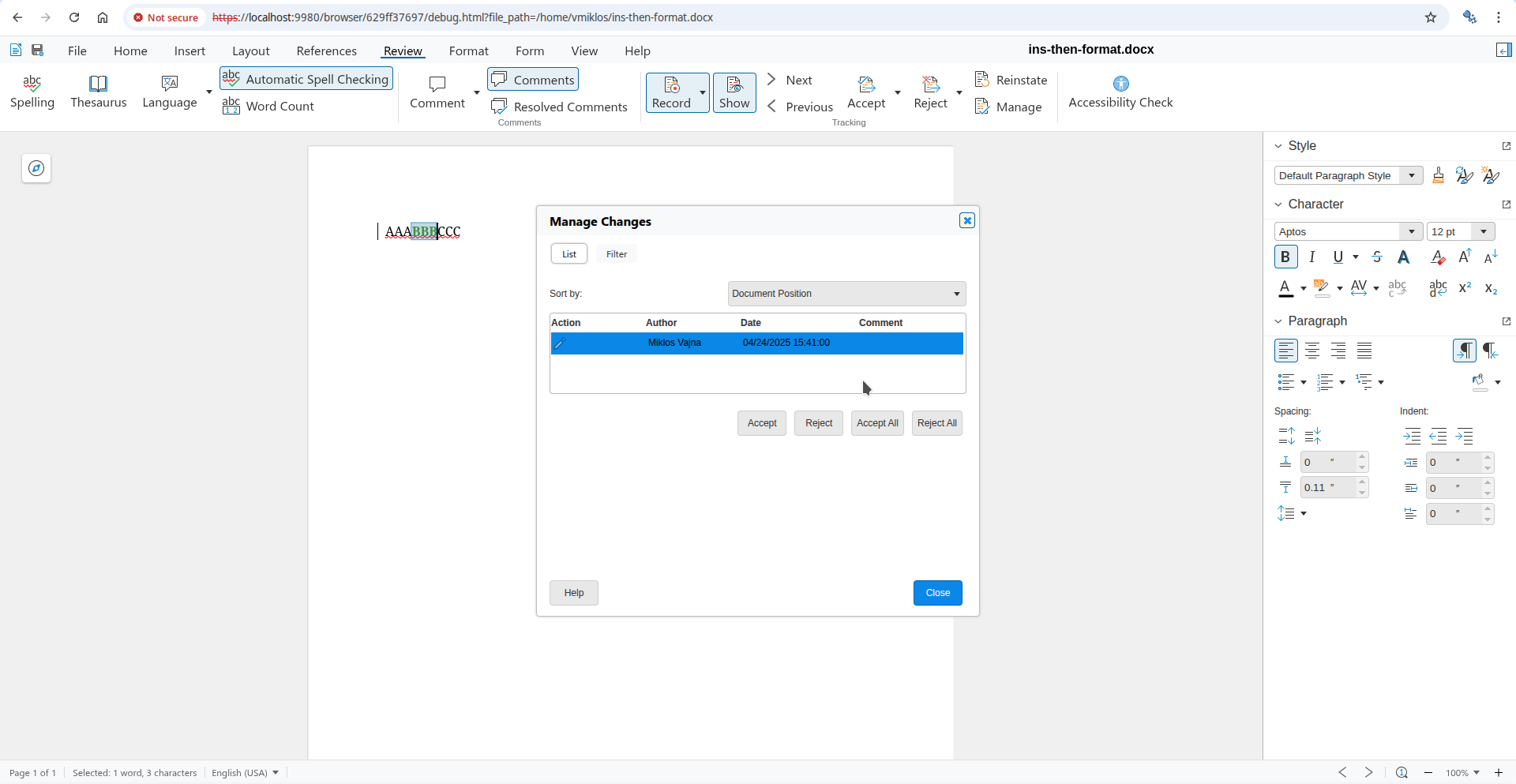 Interdependent tracked change: default accept result
Interdependent tracked change: default accept result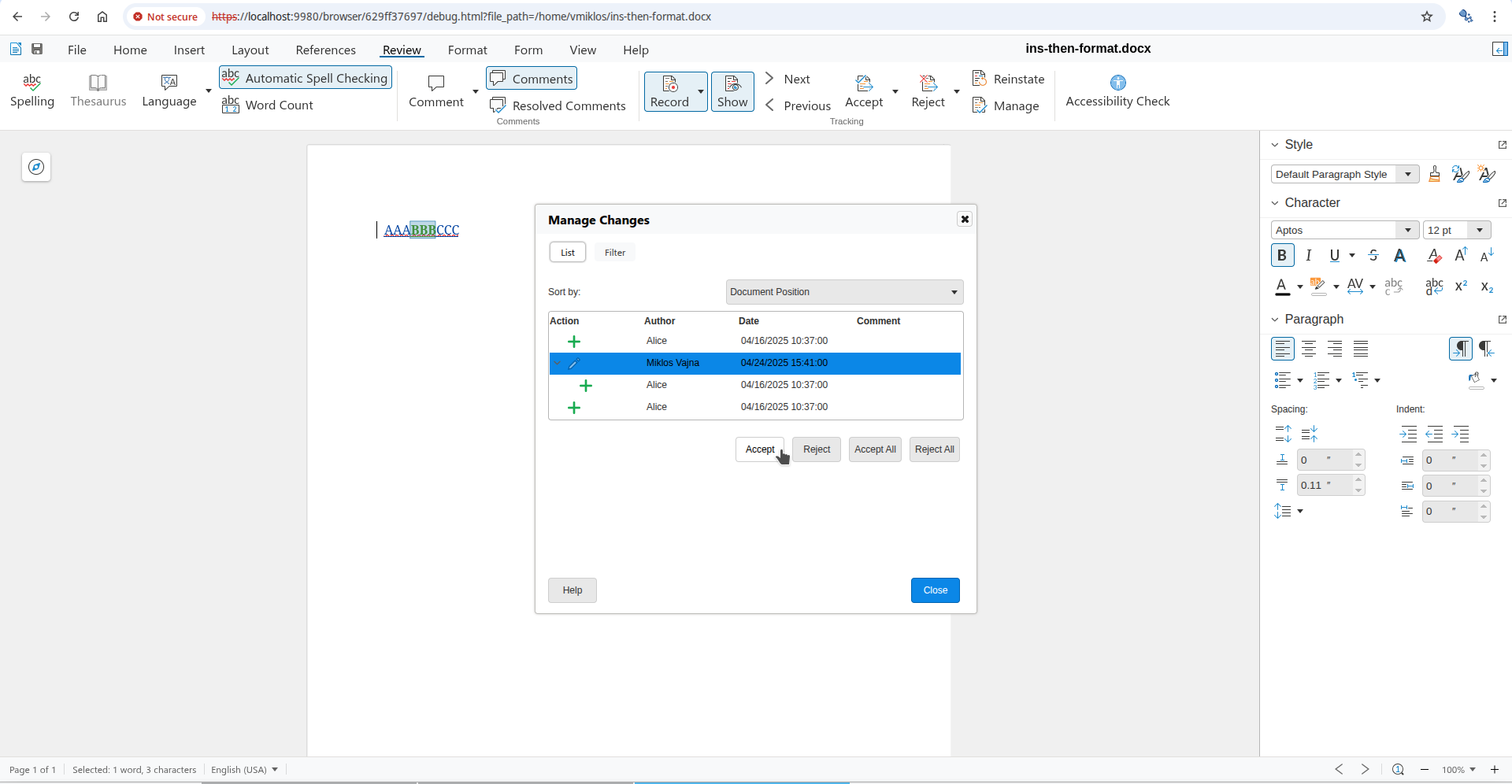 Interdependent tracked change: direct accept via the dialog
Interdependent tracked change: direct accept via the dialog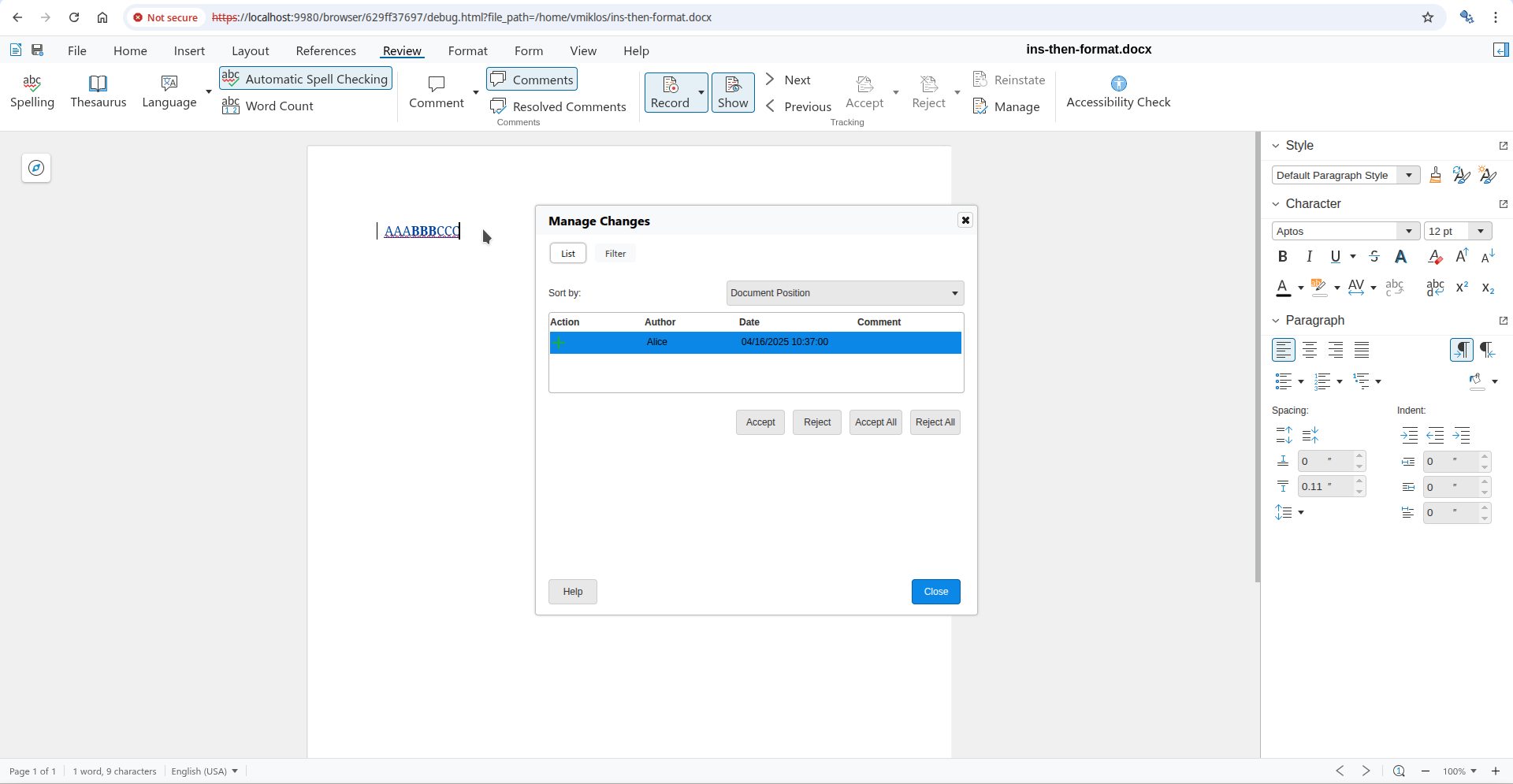 Interdependent tracked change: direct accept result
Interdependent tracked change: direct accept result Code span: baseline
Code span: baseline Code span: old result
Code span: old result Code span: new result
Code span: new result Lists: baseline
Lists: baseline Lists: old result
Lists: old result Lists: new result
Lists: new result Image: baseline
Image: baseline Image: old result
Image: old result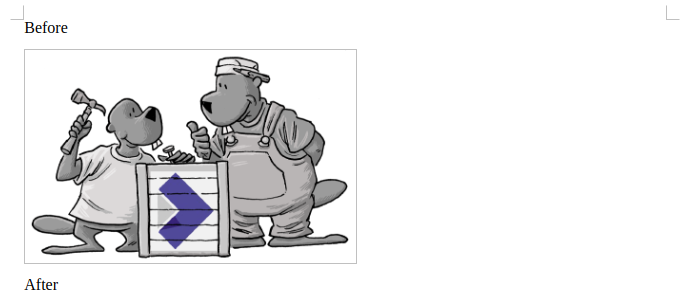 Image: new result
Image: new result Table: baseline
Table: baseline Table: old result
Table: old result Table: new result
Table: new result Quote: baseline
Quote: baseline Quote: old result
Quote: old result Quote: new result
Quote: new result Interdependent tracked change: improved format, after document load
Interdependent tracked change: improved format, after document load Interdependent tracked change: old reject, lost character style / direct format
Interdependent tracked change: old reject, lost character style / direct format Interdependent tracked change: new reject, handled character style / direct format
Interdependent tracked change: new reject, handled character style / direct format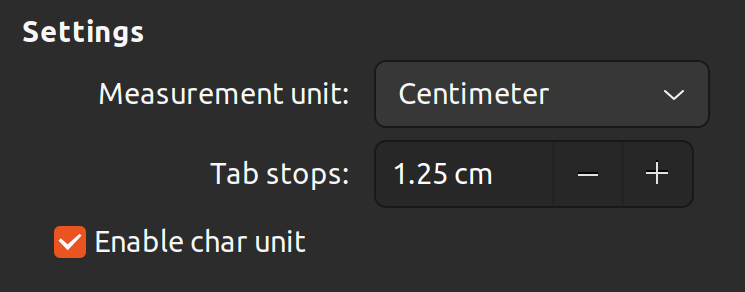
 Floating table, followed by heading: new Writer render
Floating table, followed by heading: new Writer render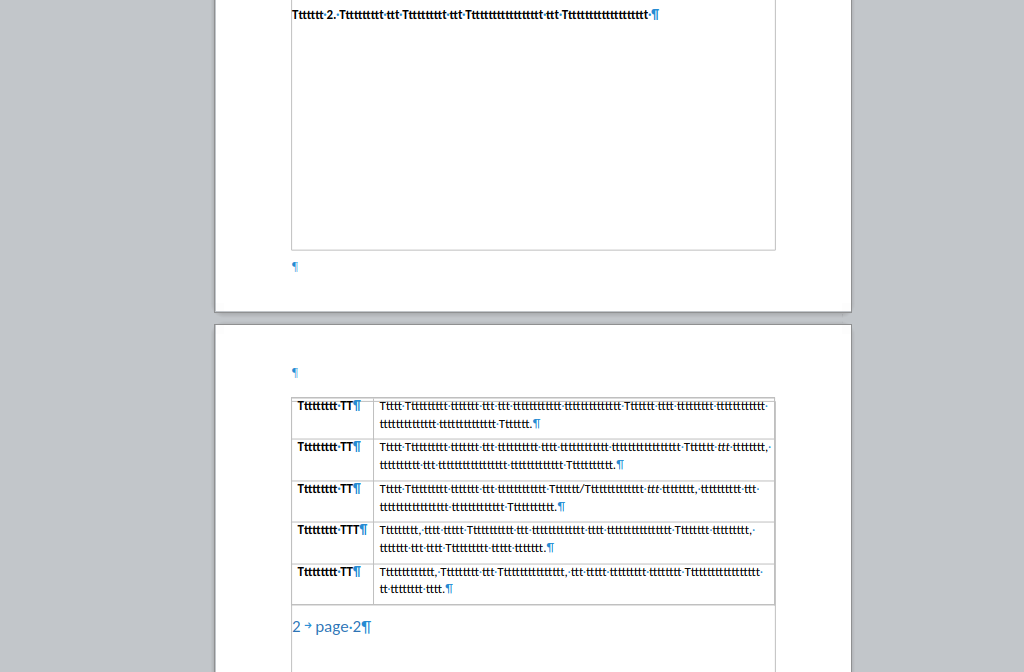 Floating table, followed by heading: old Writer render
Floating table, followed by heading: old Writer render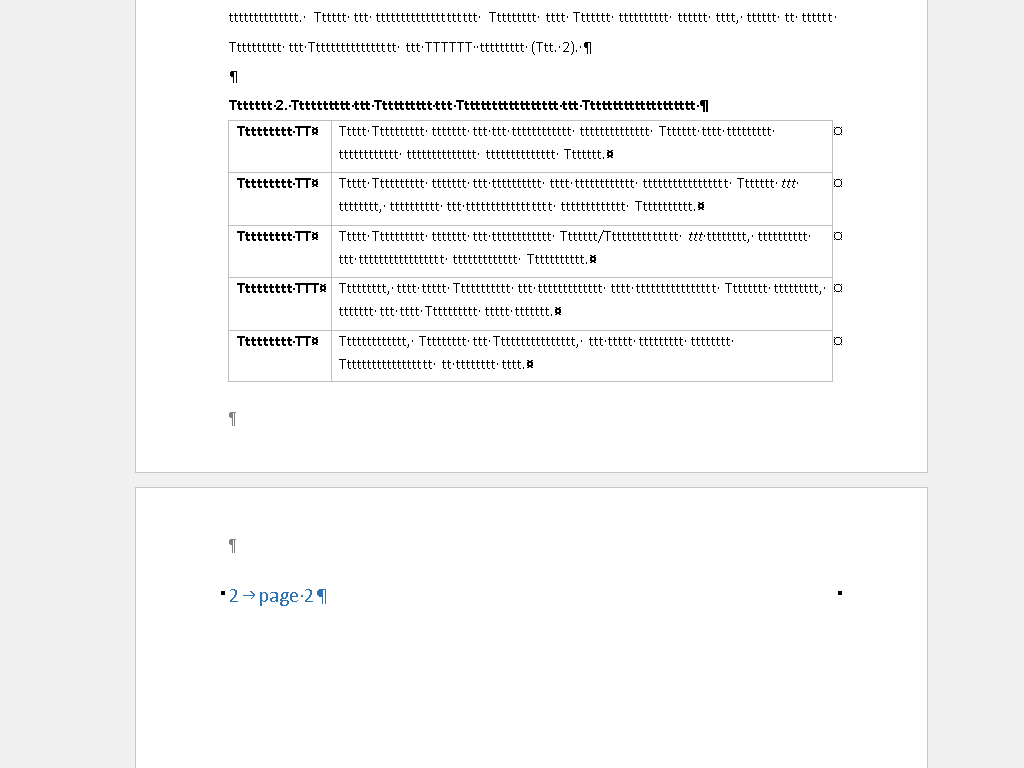 Floating table, followed by heading: reference render
Floating table, followed by heading: reference render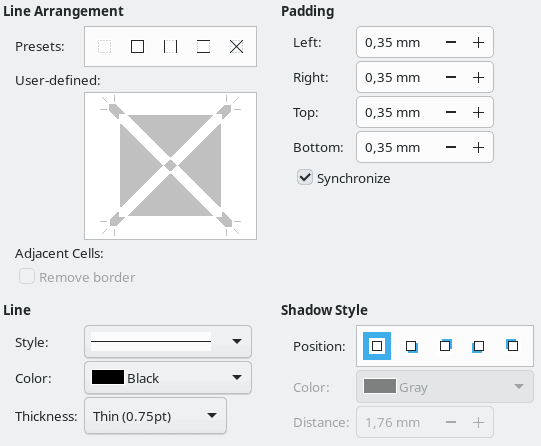
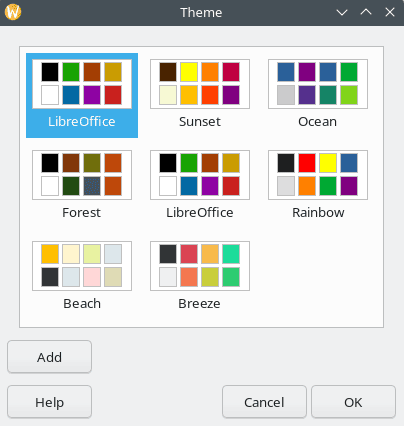
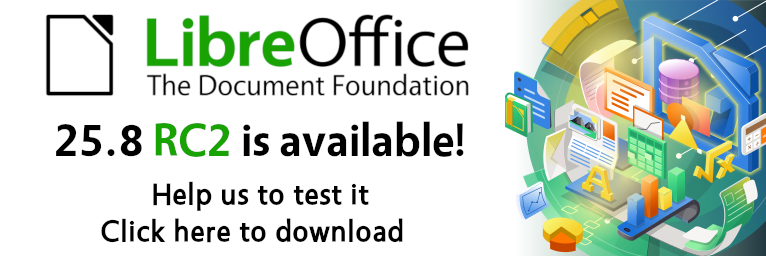



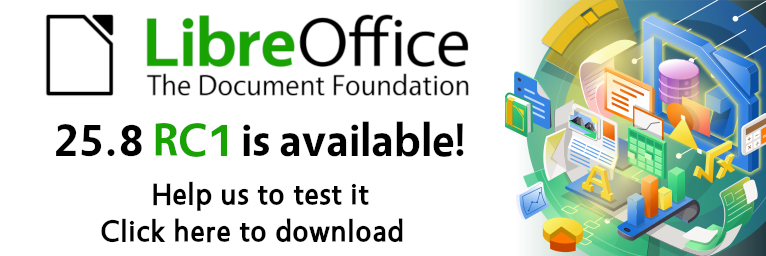
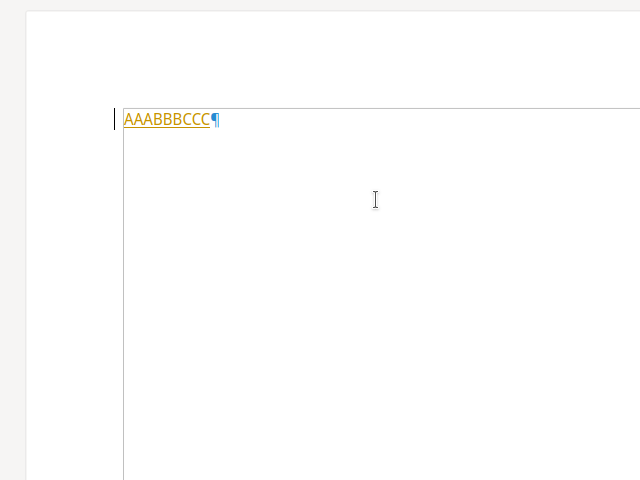 Interdependent tracked change: just insert
Interdependent tracked change: just insert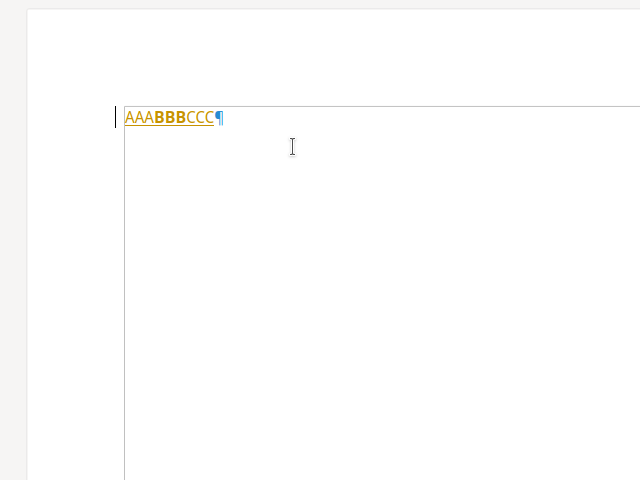 Interdependent tracked change: old, format is not tracked separately
Interdependent tracked change: old, format is not tracked separately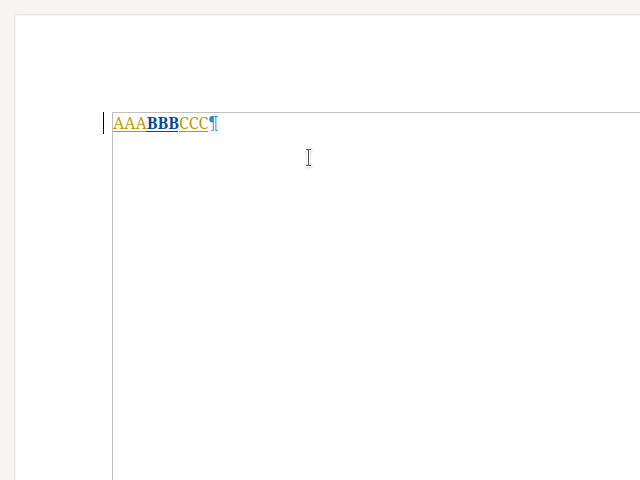 Interdependent tracked change: new, format is tracked separately
Interdependent tracked change: new, format is tracked separately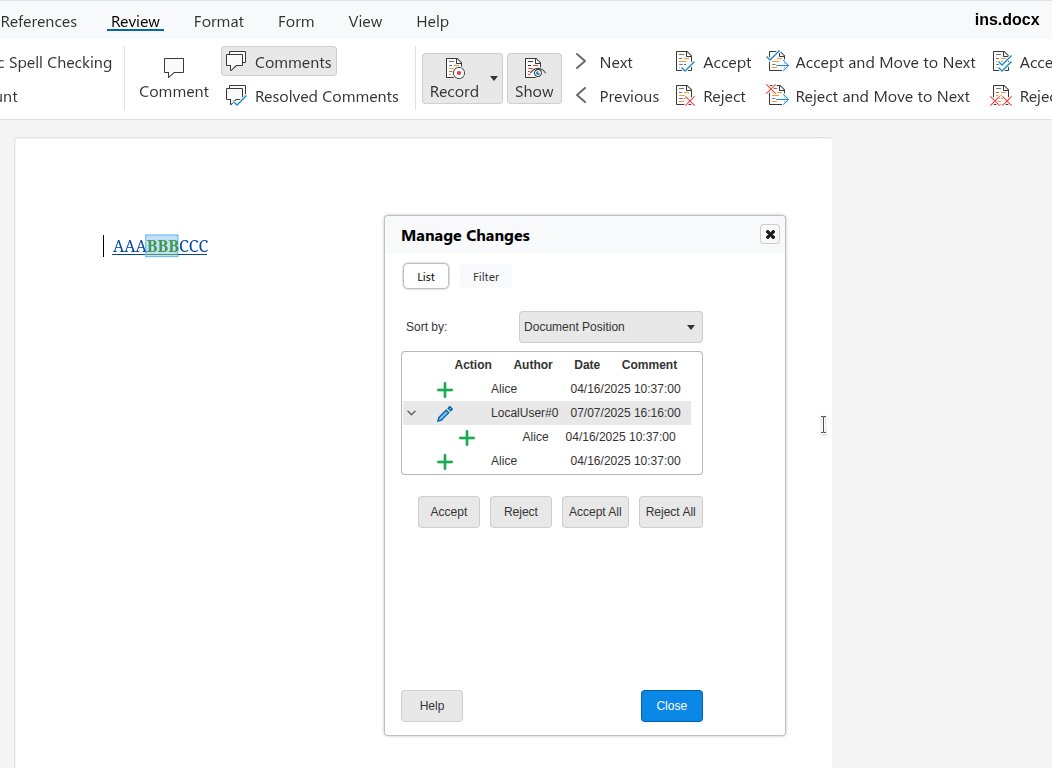 Interdependent tracked change: UI dialog now showing multiple redlines
Interdependent tracked change: UI dialog now showing multiple redlines 
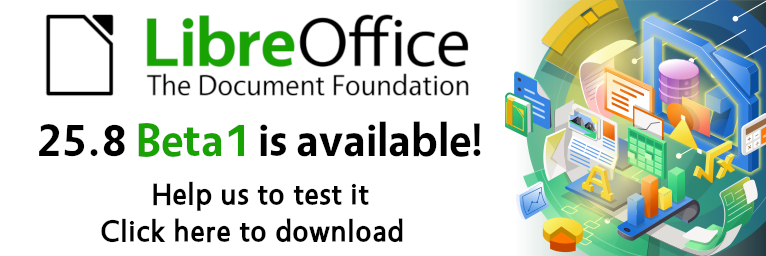
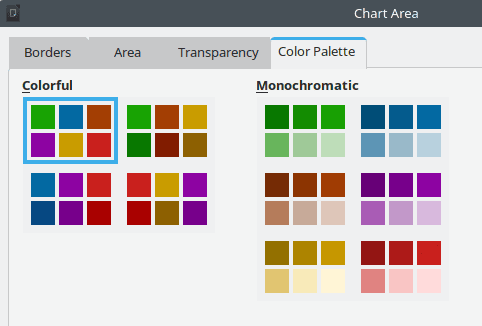
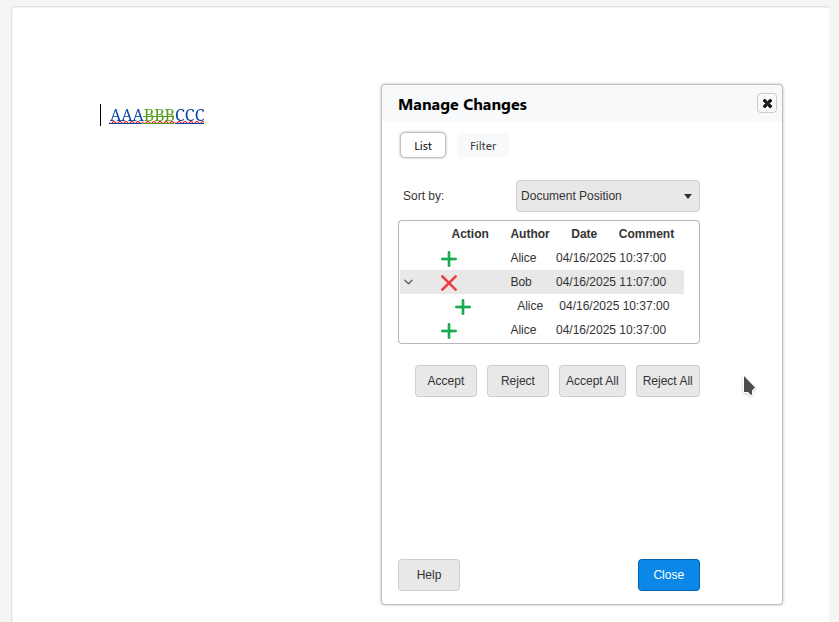 Interdependent tracked change: insert, then delete
Interdependent tracked change: insert, then delete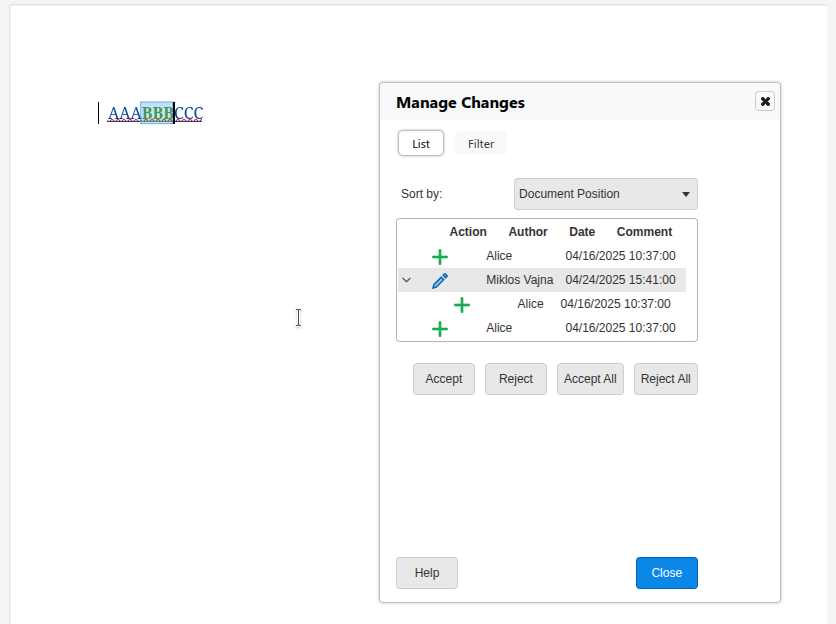 Interdependent tracked change: insert, then format
Interdependent tracked change: insert, then format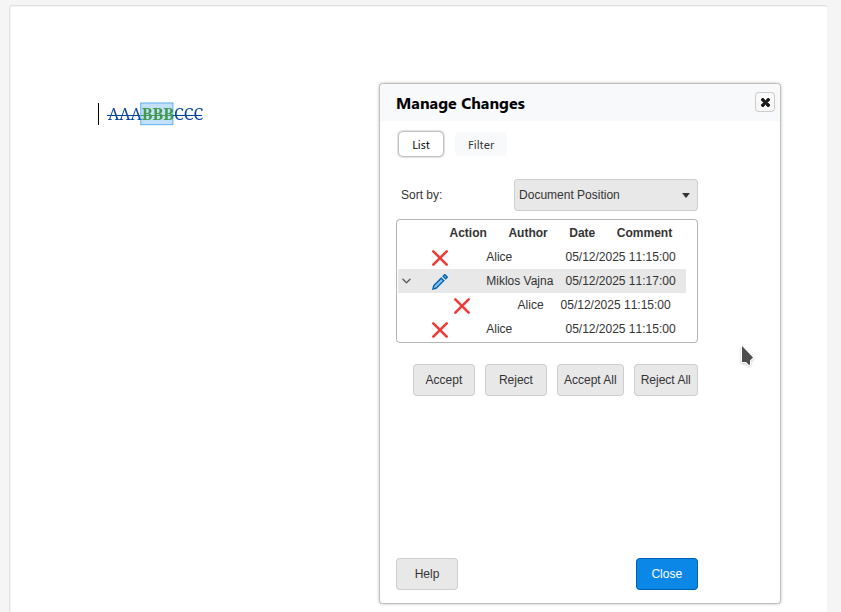 Interdependent tracked change: delete, then format
Interdependent tracked change: delete, then format
 Reinstate: an insert
Reinstate: an insert Reinstate: a reinstated insert
Reinstate: a reinstated insert Reinstate: a delete
Reinstate: a delete Reinstate: a reinstated delete
Reinstate: a reinstated delete

